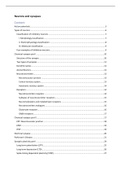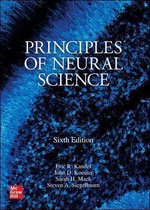Summary
Summary Neurons and synapses
- Course
- Institution
- Book
This summary covers all you need to know to pass the course Neurons and synapses. It contains information from the lectures and as well as the book Principles of neural science by kandell. The topics are explained in an understandable manner, so that you can fully get the in depth knowledge that yo...
[Show more]




